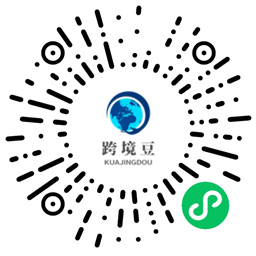China and South Korea FTA may come into effect by the end of the year, and the FTA will open up a $12 trillion market

Korean cuisine, Chinese beauty, and tourism exchanges have become a new highlight of China-South Korea economic and trade relations.
On November 1st, Premier Li Keqiang of the State Council of China attended the closing ceremony of the China Tourism Year in Seoul, South Korea. He said that he would import Korean Ginseng Chicken Soup and create conditions to import Korean kimchi. In 2014, the scale of tourism between China and South Korea exceeded 10 million, which was a major breakthrough. .
On the same day, Li Keqiang attended the welcome luncheon of South Korean economic circles in Seoul and delivered a keynote speech. He said that in the past 20 years since the establishment of diplomatic relations between China and South Korea, the trade volume has approached 300 billion U.S. dollars, an increase of nearly 60 times. This kind of rapid development momentum is "difficult to find a precedent" in the world. China will open its door wider and wider, and it will open up a broader horizon for future China-South Korea economic and trade cooperation.
Ling Shengli, secretary general of the International Security Research Center of the China Foreign Affairs University, believes that the two countries signed a China-South Korea bilateral free trade agreement this year. After the completion of the China-South Korea free trade area, a huge market with a total economic volume of 12 trillion US dollars will be formed. One of the important purposes of Premier Li Keqiang's visit is to accelerate the entry into force of the China-South Korea bilateral free trade agreement.
Before the end of the year
Free trade agreement may be formally approved
Since the establishment of diplomatic relations between China and South Korea, trade volume has approached 300 billion U.S. dollars. Prior to this visit, Li Keqiang published a signed article in Korea’s Chosun Ilbo with the title of "Better Continuing the History of Sino-Korea Friendship". The article specifically mentioned: After the completion of the China-Korea Free Trade Area, the economic headquarters will be formed. A huge market with a volume of 12 trillion US dollars.
On October 31, Li Keqiang and South Korean President Park Geun-hye held bilateral talks. The leaders of the two countries agreed to complete their respective domestic procedures as soon as possible, urge the Korea-China Free Trade Agreement (FTA) to enter into force before the end of 2015, and to speed up the regional comprehensive economic partnership agreement. (RECP) The negotiation process and work together.
"There is no free trade agreement among the world's top four goods trading countries, China, the United States, the European Union, and Japan. At the same time, China is the world's largest trade country in goods, and South Korea is the ninth largest trade country in goods." Development Research Center of the State Council Foreign Economic Relations Department Director Xu Hongqiang told the reporter of "Daily Business News", "As the world's largest trading nation and the ninth largest trading nation, this China-South Korea Free Trade Agreement can be said to be a trade volume and comprehensive level, trade scale and liberalization. The highest level of free trade agreement, so this China-South Korea free trade agreement is not only for China and South Korea, but also has a great impact on the world."
After the implementation of the China-Korea Free Trade Agreement, in terms of trade in goods, China will eventually remove tariffs on 91% of its products from South Korea, covering 85% of South Korea’s imports; at the same time, South Korea will eventually remove tariffs on 92% of its products from China. Covers 91% of imports from China. This also means that Chinese customers who used to go to Korean duty-free shops to scan goods will be able to enjoy most Korean products at the same price in Korea.
Although the agreement has been officially signed, there are still several hurdles to go through before it is officially implemented. It is understood that the final entry into force of the China-South Korea Free Trade Agreement will have to go through the domestic approval process of the two countries. As far as South Korea is concerned, it has to wait for the South Korean Congress to handle the bill. Prior to this, Lee Ho-joon, the Commercial Counselor of the Korean Embassy, said in an interview with the "Mainichi Business News" reporter, "At present, the two governments are actively advancing the domestic approval process and strive to take effect in 2015." The Korea-China Trade Minister held on October 31. During the talks, a consensus was reached on obtaining the approval of the legislature for the Korea-China Free Trade Agreement (FTA) within the year.
5 years later
Chinese tourists to South Korea increased 3.5 times
Whether it is Chinese tourists going to South Korea to taste food or South Korean tourists coming to China to explore the beauty, tourism is becoming a new bright spot in the field of China-South Korea economic and trade relations.
In July 2014, China and South Korea issued a statement identifying 2015 and 2016 as the "Chinese Tourism Year" and the "Korea Tourism Year" respectively. The two countries have agreed to actively discuss plans to expand the scope of visa exemption in stages. In the China-South Korea Free Trade Area Agreement signed this year, China and South Korea have set relevant obligations in terms of visa facilitation, temporary entry permit, transparency, and natural person movement committees, so as to facilitate the flow of people between the two countries. There are also preferential arrangements for facilitation. All these benefits will promote the further expansion and growth of tourism between China and South Korea.
In 2014, the scale of tourism between China and South Korea exceeded 10 million, and Chinese tourists are vital to the development of South Korea's tourism industry. According to statistics from the Korea Tourism Development Agency, the number of Chinese tourists visiting South Korea in 2014 reached 6.12 million, accounting for 43% of the number of foreign tourists in South Korea, and it is expected to reach about 3.5 times the current number by 2020. From the perspective of consumption, the consumption scale of Chinese tourists visiting South Korea in South Korea will reach 30 trillion won, or more than 180 billion yuan, supporting about 8% of South Korea's retail market. For example, last year, Chinese customers accounted for 63% of the total sales of the Shilla Duty Free.
During the "Eleventh National Day Golden Week" just past, Chinese tourists showed great interest in South Korea. According to the "Golden Week Outbound Travel Report" released by Ctrip.com, South Korea ranks second in the list of tourist destination countries during the "Golden Week", while Japan and Thailand rank first and third respectively.
With the implementation of the China-South Korea Free Trade Agreement, China will allow South Korean travel agencies to solicit tourists to South Korea or third countries in China, and it is expected that there will be fewer and fewer restrictions on Chinese travel to South Korea.






